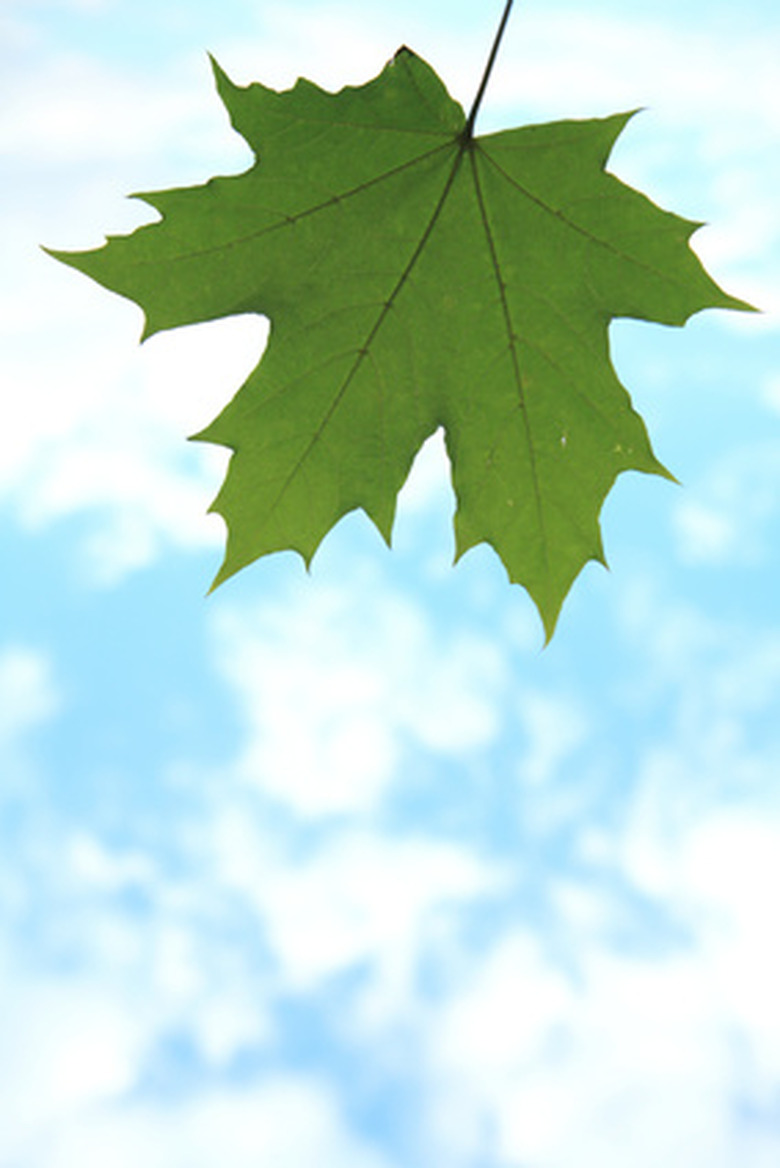Red Bumps On The Leaves Of My Maple Tree
Maple tree leaves often develop tiny, mushroom-shaped bumps. These growths are most common on silver maples, but red and sugar maples experience them as well. The bumps emerge pale green from the leaves' surfaces before deepening to red. While unsightly, especially on trees grown primarily for their foliage, these blemishes are a maple tree's way of defending itself against a tiny, leaf-devouring insect.
Step 1
The insects responsible for red bumps on maple leaves are invisible, maple bladder gall mites (Vasates quadripedes). Their 1/125-inch long, carrot-like bodies have two pairs of legs, and their color ranges from white or pink to orange.
Life Cycle
Step 1
Adult mites spend their winters beneath a maple tree's loose bark or near its healed-over wounds and pruning scars. When the tree's leaf buds emerge in spring, the mites migrate to and feed on them. The tree responds by producing blisters around the injured leaf tissues. The blisters harden into light green spherical galls as the leaves expand. The galls may be 1/10-inch high and 1/8-inch around. The mites enter the hollow spaces within the galls from openings on the lower leaf surfaces and continue feeding. They also reproduce, without mating, while inside the galls. The newly hatched mites feed and mature there before leaving the galls by mid-summer for their winter hiding places.
Step 2
- The insects responsible for red bumps on maple leaves are invisible, maple bladder gall mites (Vasates quadripedes).
- The blisters harden into light green spherical galls as the leaves expand.
Damage
Step 1
Severe infestations of maple bladder gall mites can create enough galls to cover the upper surfaces of the leaves on which they feed. The galls' weight may distort the leaves' shapes and cause them to drop prematurely. The most serious damage is likely after a mild winter during which large populations of the mites survive. The maple trees, however, usually compensate by producing new leaves to replace gall-damaged ones.
Control
Step 1
The damage from maple bladder gall mites rarely goes beyond cosmetic. The trees suffer no lasting damage from their infestations. If your maple's unsightly foliage is a concern, however, you have options. Saturate a dormant tree with an early spring spray of mite-suffocating dormant oil or liquid lime sulfur. The temperature must be more than 40 degrees Fahrenheit, with no freeze expected for at least a day. Spray with a miticide formulated for eriphyid mites may work if timed just as the leaf buds are emerging. These chemicals are ineffective on trees with existing galls.
Step 2
- Severe infestations of maple bladder gall mites can create enough galls to cover the upper surfaces of the leaves on which they feed.
- Spray with a miticide formulated for eriphyid mites may work if timed just as the leaf buds are emerging.
Mite-Resistant Maples
Step 1
The most effective way to eliminate red bumps on your maple leaves is to grow mite-resistant varieties. The resistant Norway maple (Acer platanoides) 'Crimson King' cultivar has striking, maroon summer foliage. Norway maple 'Deborah's' leaves progress from spring's bright red to summer's dark green and autumn's yellow-orange.
